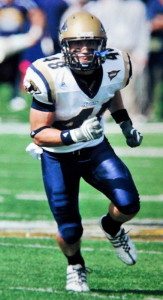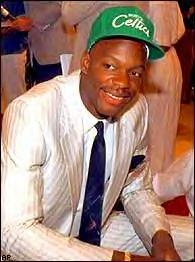Everyone is familiar with the haunting sense of expectation. Often, the case is that parents have set expectations for their children, or coaches have them for athletes. Regardless, this can cause a spark of dedication, but it can also cause an incredible amount of pressure. Teens that play in the NCAA, especially at big name Division I schools, face these expectations of success every day. But what happens when they can’t produce?
Drugs, whether they be recreational, performance enhancing, or prescribed, are commonly abused by college athletes to keep themselves “on top.”
In a society where eyes are always on women and how they act in the media, college cheerleaders are among the many that must keep their physical appearance intact. Recreational stimulants are generally known for keeping people skinny because the central nervous system is hyperactive, causing a person’s heartbeat and breathing rate to increase immensely. Not only do stimulants cause cheerleaders to drop pounds fast, but they trick the brain into thinking that you’re well rested, so girls can go days without feeling tired while traveling from sporting event to sporting event. The most common drugs taken are cocaine, heroin, and prescribed Adderall. But, things can take a hard turn for the worst when these drugs affect more than just staying an unhealthy 95lbs. July 28, 2014, Louisville cheerleader Danielle Cogswell was found dead in an apartment after overdosing on heroin and Xanax. The case was simple: she was an elite athlete with a bright future that she did not think she could live up to. Her coach commented after her death about how great she was, and how everyone was shocked that she had passed. However, her sister came forth and said that Cogswell had a drug problem dating back to two years before her death, and many believed it had to do with the pressure of staying fit before becoming part of the spirit team at the University.
While cheerleaders are required to stay a certain size, men’s sports require a different level of accomplishment. Many Division I athletes have their schooling paid for, with a contract of performance in return. In Laymen Terms, universities are trading thousands of dollars in education for a promise from an 18 year old that they will produce impressive statistics. But what happens when a football player has to play with a broken thumb, or a basketball player steps on the court with a pulled quadricep? The obvious answer would be to take some time off. However, many athletes turn to prescription painkillers instead, which, as we all know, are incredibly addictive. Painkillers are easily passed around locker rooms because players are expected to play through the pain. At the University of Akron in 2011, these scary drugs affected the locker room just as it had affected Cogswell’s apartment. Chris Jacquemain and Tyler Campbell, teammates on Akron’s football team, ended their struggle with prescription drugs in the worst way. Jacquemain, playing varsity as a freshman in high school, and winning a state title in 2001, starting taking OxyContin in 2007 after a separated shoulder injury. By 2008, he set records for the Zips, passing for 2,748 yards at the quarterback position. Coaches projected him to go into the NFL Draft. Campbell, who had quickly become best friends with Jacquemain understood his addiction to Oxy and Percocet, and started using as a defensive end. They felt like they were on top of the world– until they got suspended from football. After football was taken from them, all bets were off. In and out of rehab centers, the two never found themselves completely clean because of the withdrawals. Campbell died July 22, 2011, the same morning he was released from rehab; Jacquemain died of an overdose Nov. 30, 2011, after being released from jail for violating probation. The sad truth is that the pressure of the media, the school, and the idea of success drove these two athletes to addiction from a few injuries.
Stories like Len Bias’s death in 1986 haunts athletes around the United States because it proves that no one is invincible, and even someone like Bias can give in to the pressures of recreational drugs. The NCAA has recently taken action when it comes to drug testing athletes. They have reserved the right to test any student-athlete that has tested positive, or that has submitted multiple diluted samples, at any time, which includes the day of championships and bowl games. If a student does not pass the test, they are immediately ineligible no matter the situation. Also, the NCAA may randomly test the day of any championship with the permission of the Board of Governors. Prior to Cogswell’s death, spirit squads were never NCAA supported, so drug tests weren’t necessary as long as the cheerleaders were performing to their potential. However, in 2014, the Association started incorporating spirit squads in their year-round testing to keep the images of schools positive in the eyes of fans, as well as the athletes safe.
The key to success here is that expectations should be the driving force of goals, not pressures. Too many high school athletes end their careers burnt out from needing to be successful for too long. And, those who make it to the college level have just learned to deal with it. I’m not saying college sports are bad influences on teens, seeing as I will be one in a few short months, but I believe that many athletes never get to see the beauty of the sport they play because they are blinded by the idea of success.






